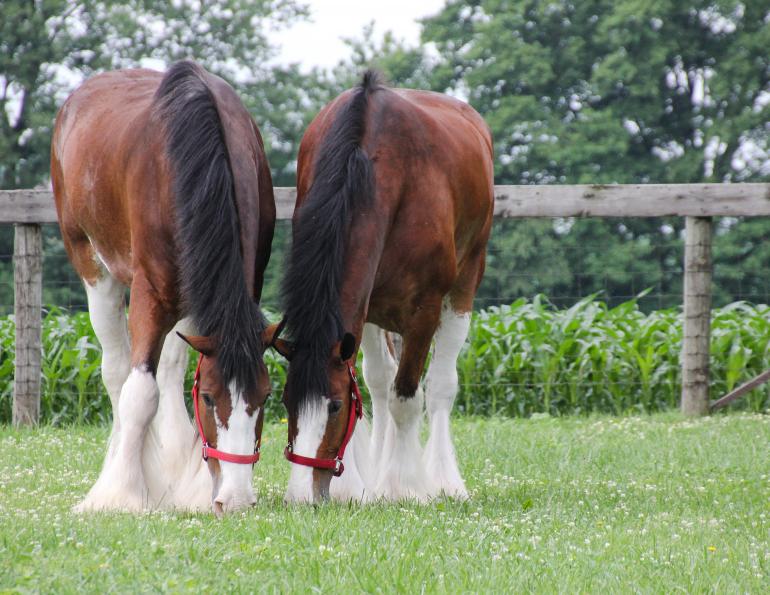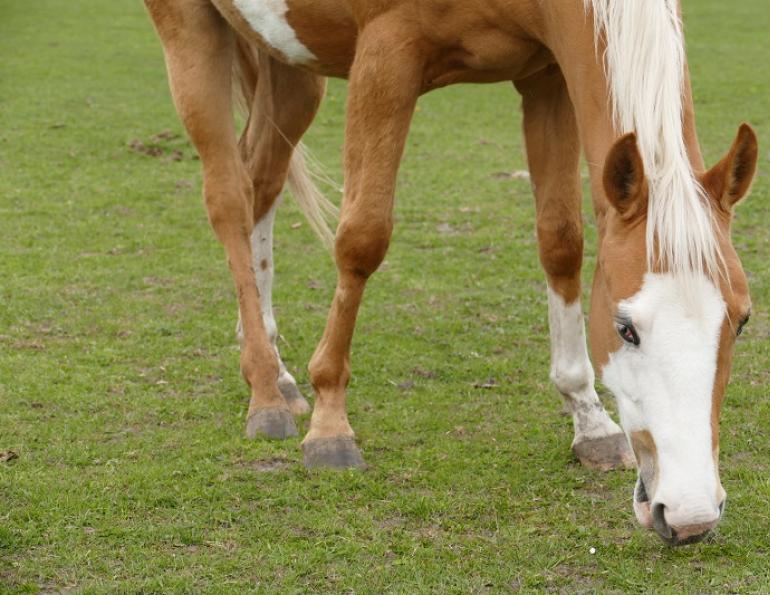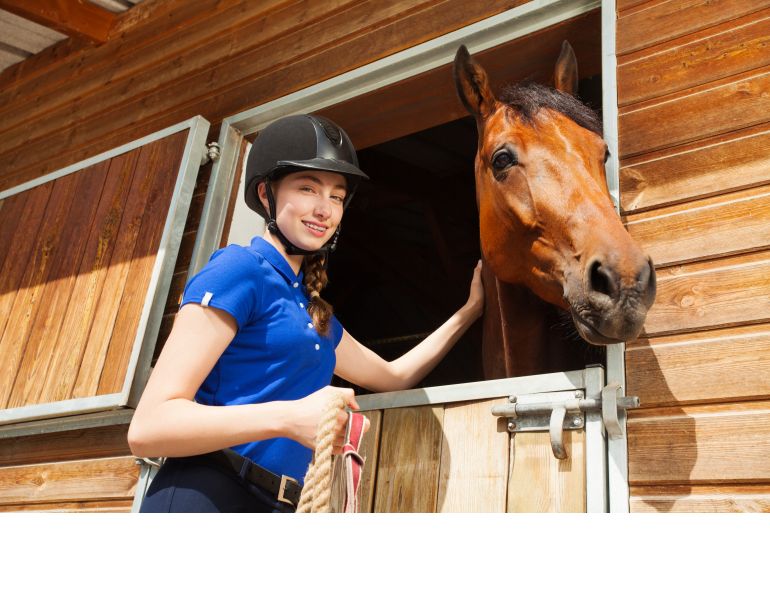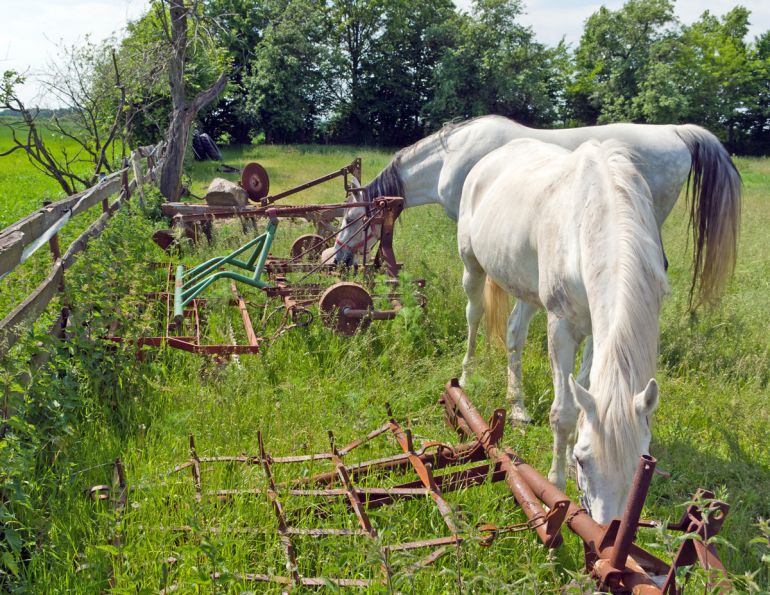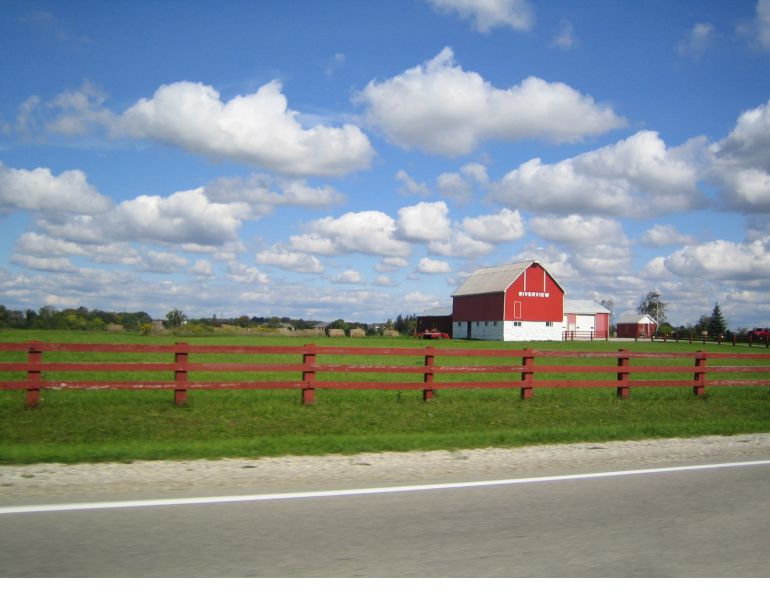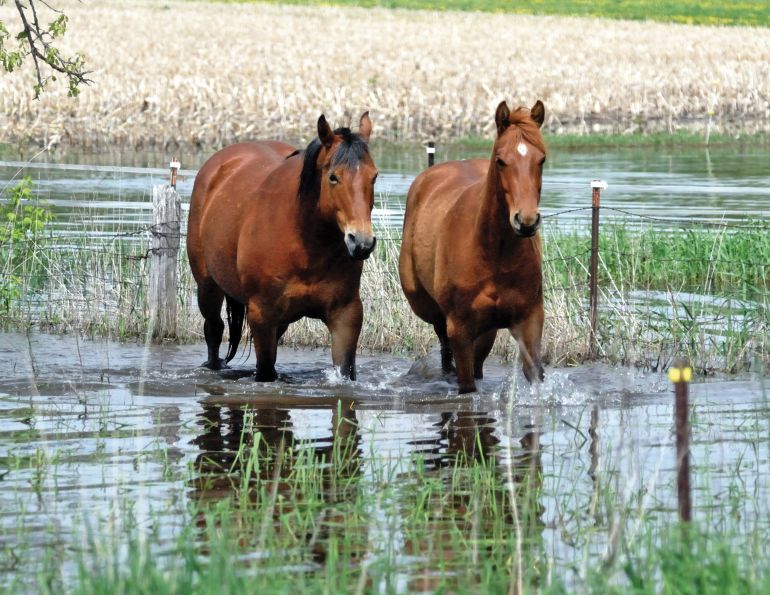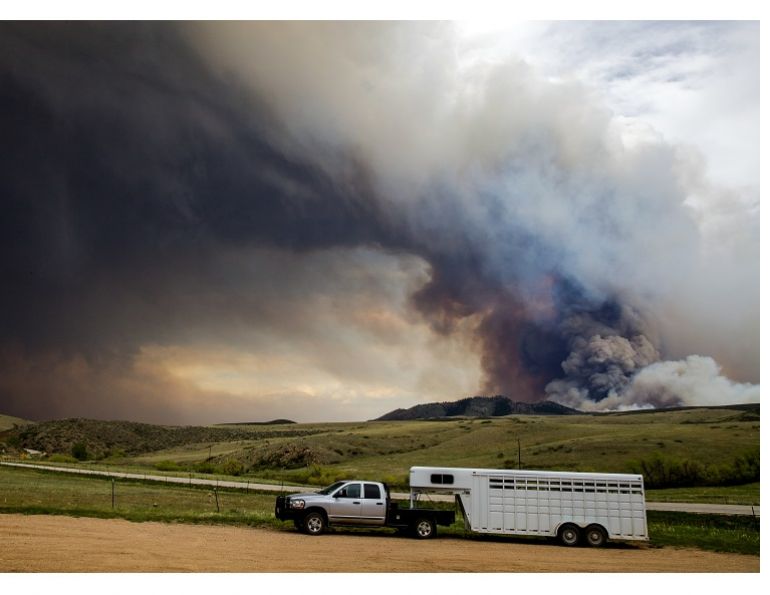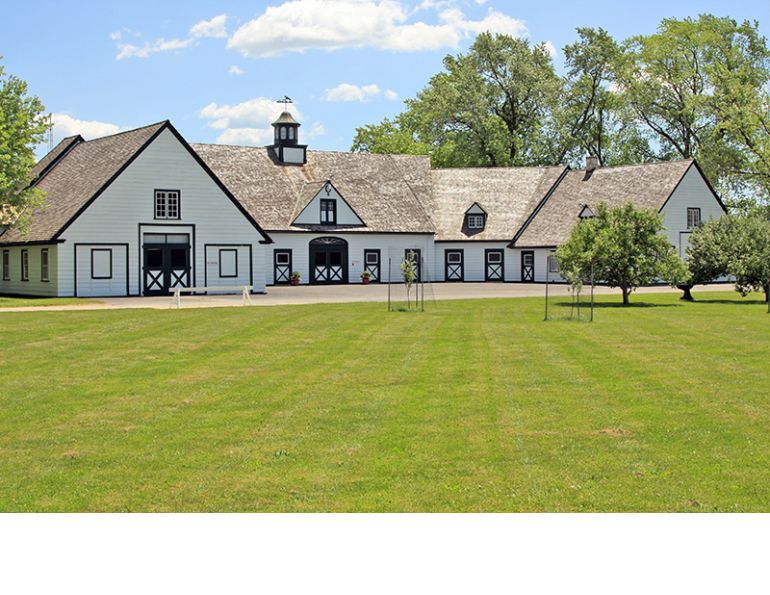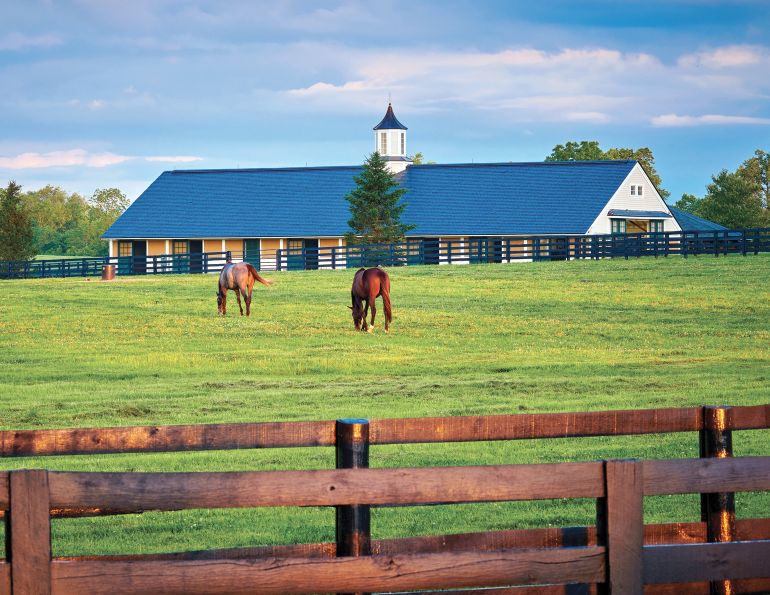By Stephanie Captein
When asked about their ideal horse property, whether for ownership or boarding, many horse owners will list things such as expansive green pastures, clean stables, dry turnout areas, a managed manure compost system, proximity to equestrian amenities such as trails, and nice views of streams and forested areas. The resulting image is a picturesque vista of horses dotting the landscape and living in harmony with nature.
Missing from this ideal vision but present in real life are things like weeds, wet pastures, flies, rodents, stream bank erosion, and run-off of manure, urine, and other contaminates into local waterways. All of these can lead to unnecessary stress being placed on the health of our horses and our environment. With careful management, and a little innovation and creativity, we can achieve and maintain a healthy balance with nature by reducing our ecological hoofprint. Here are a few ideas to get you started.
Land Stewardship
1. Consider the location of your barn, stables, pastures, sacrifice areas, and other property features in relation to elements of the natural environment. For example, where are watercourses and drainage ditches located? What is the hill slope of your property? Are there any low-lying, wet areas? Try to determine the interaction between your property uses and these natural elements so that you can improve any negative interactions. For example, a high use area with a significant slope could lead to run-off, erosion, and slumping. You might want to consider rearranging things to avoid using the area and/or plant berms and native plants along the slope to increase slope stability and decrease erosion and run-off.
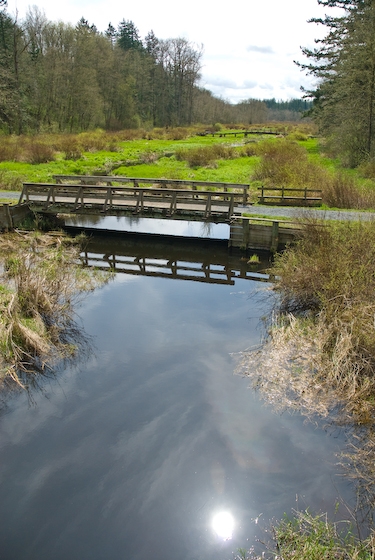
Protect watercourses, and the habitat they provide for insects, fish, and other aquatic organisms, by limiting your horse’s access. If a watercourse must be crossed on your property, build a bridge to limit the degree of impact to that watercourse. Photo courtesy of Langley Environmental Partners Society
2. Riparian areas, the land beside watercourses, perform important ecological services. The native plants provide erosion and sediment control, shading and wind protection to the stream, and wildlife habitat, and allow for slow infiltration of run-off during wet weather. Horses can negatively impact these ecologically fragile areas by browsing, compacting the soil, increasing erosion, and leaving manure behind. Keep riparian areas fenced off to protect the soil, plants, and unique ecological services provided by these areas. It’s good for your horse’s health too, since various health problems such as foot root and soft hooves can arise from muddy, wet feet.
Related: 50 Ideas for Improving Your Horse Property
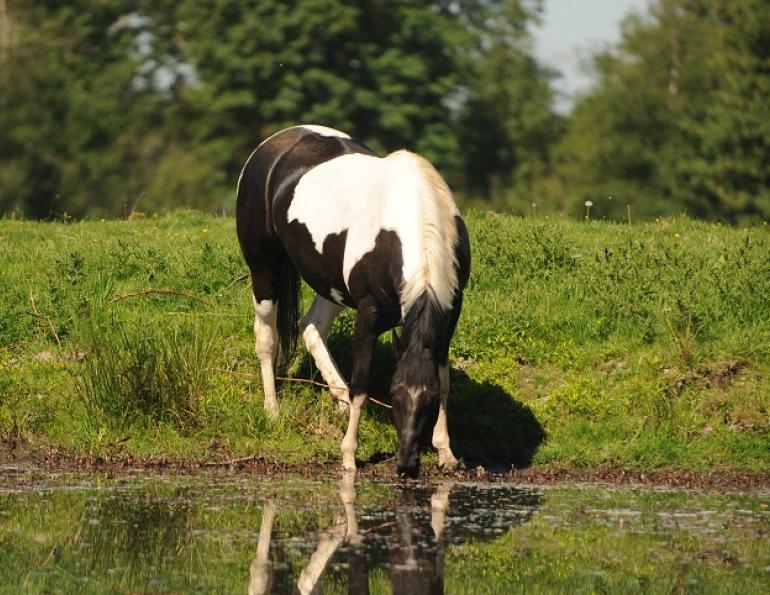
Robin Duncan Photography
3. Rotational grazing can maximize pasture forage available and help maintain healthy pastures by giving resting sections a chance to regenerate. Rotational grazing involves using several smaller sections of pasture and only grazing one section at a time. Ideally, a rotational grazing plan has at least four sections with enough grazing for seven to ten days which allows each section a rest of three to five weeks. You will have to monitor pasture growth and grazing, and rotate accordingly.
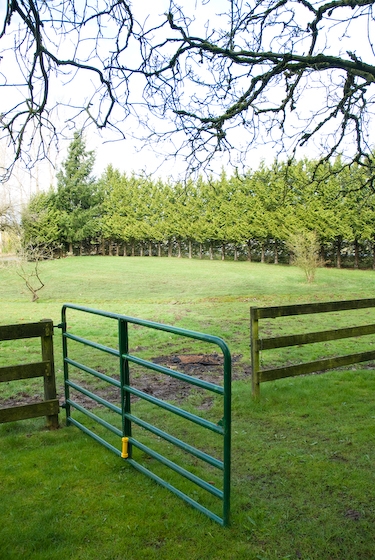
Photo courtesy of Langley Environmental Partners Society
4. Create a sacrifice turnout area such as a paddock where you can place your horses when pastures are too wet, too dry, or need a rest, or you want to limit grazing. This allows you to protect pastures from degradation and prevent your horse from overconsumption of lush grass. Your sacrifice area should be on high, dry ground with footing material that allows for good drainage. It’s also a good idea to have a buffer of native plants around the perimeter to prevent run-off and promote infiltration of rainwater.
Related: Budget-Friendly Ways to Green Your Horse Barn
Pest and Weed Management
5. Weed species out-compete native plants, significantly reduce the carrying capacity of your pastures, and some can be harmful to your horse’s health. Prevention is the best defense against weed establishment so a good pasture management regime is important. Consider planting a native buffer strip around pastures to prevent weed seed colonization. Brushing up on your weed identification is also a great idea since early detection and early treatment are the best management strategy. Weed species vary from region to region so make sure to find a guide specific to your area.
6. Provide natural habitat for predators such as barn owls, hawks, falcons, kestrels, and bats, and in return they will provide you with natural pest control. In most cases all they require are a nesting box or place to nest, a novel territory (no other predatory birds in the immediate area), and a habitat which includes trees to perch on, water, and food sources. An equestrian property with no other predatory birds in the area would provide an excellent home, especially with a constant supply of pesky small mammals and insects to feed on. Get busy building bird and bat boxes and do your research to determine the best location for them on your property. Contact a local wildlife rehabilitation centre to see if they have any birds they are looking to relocate and offer up your home.
7. Get creative with your pasture rotation regime by adding a “chicken mobile.” With your own flock of chickens, not only will you benefit from local, home-grown eggs but chickens are bug eating machines. Developing a roaming “chicken mobile” will allow you to move the chickens from pasture to pasture following the rotational grazing of your horses. Chickens will scratch and pick through horse manure, distributing it, exposing parasites to sunlight, and eating parasites and other bugs. This will reduce the risk of reinfection for your horse and your pastures will benefit from the distributed horse manure and addition of nutrient-filled chicken manure. Not a fan of chickens? Why not try ducks? Ducks love to eat bugs, slugs, and weeds, plus they produce eggs right through the winter.
Related: How to Make Rotational Grazing Work on Your Horse Farm
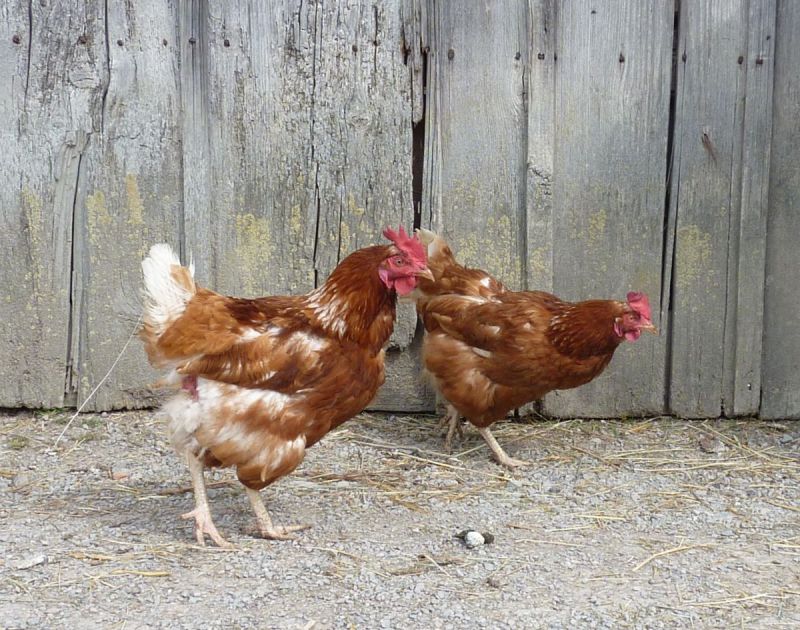
Photo courtesy of Langley Environmental Partners Society
Watershed Stewardship
8. Install gutters and downspouts on barns, sheds, and outbuildings to divert rainwater away from high traffic areas. If you already have gutters and downspouts, ensure they are in proper working condition and clear out any debris. Consider hooking up your downspouts to rain barrels to collect rainwater for watering your garden, washing off equipment, washing down stall floors, or even providing water for your horse.
9. Create diversion berms to direct rainwater away from high traffic areas such as paddocks and other confinement areas. Direct the rainwater to grassy swales, buffers, or a rainwater garden, giving it a chance to slowly infiltrate the soil and filter out nutrients and/or pollutants. Otherwise, rainwater can rush along the surface picking up manure and other pollutants that will be deposited into local streams. Rainwater that can’t infiltrate the ground will pool and create standing water and mud, the perfect breeding habitat for flies and mosquitoes. Consider using pervious ground materials such as gravel or paving stones around your property since these materials allow water to infiltrate the ground and recharge groundwater and local aquifers.
10. Limit horse access to watercourses through the use of fencing, bridges, and alternative watering solutions. As mentioned before, stream banks and riparian areas are sensitive areas that are susceptible to degradation. The streams themselves are also very susceptible to degraded water quality and habitat destruction for stream insects, fish, and other aquatic organisms. Install fencing to keep your horses out of the streams and use gravity fed pumps or solar powered nose pumps to provide access to stream water. If a watercourse must be crossed on your property, build a bridge to limit the impact.
Related: The Seven Deadly Sins of Haymaking
11. There are lots of other water conservation measures you can implement around your stables that will make a big difference. For example, when cleaning out water buckets and troughs reuse the old water to water your garden beds. Or how about switching to automatic watering systems that only release the amount of water your horse can drink? Next time you wash your horse try using a sponge and bucket rather than a hose. And why not switch to biodegradable, all natural, or homemade shampoos? Your local watershed and your horse will thank you.
Waste Management & Recycling
12. Implementing a manure composting system on your property or at your boarding stable has many benefits. Not only does composting manure eliminate waste hauling fees, odour issues, fly breeding habitat, weed seeds, and parasitic loads, but it provides you with nutrient-rich compost which is excellent for top-dressing garden beds and pastures. The addition of compost to your pastures increases water-holding capability, adds to the soil structure, improves drainage by adding permeability, and adds aeration to the soil. If you’ve got more compost than your pastures need, why not sell it or give it away to neighbours and avid gardeners?
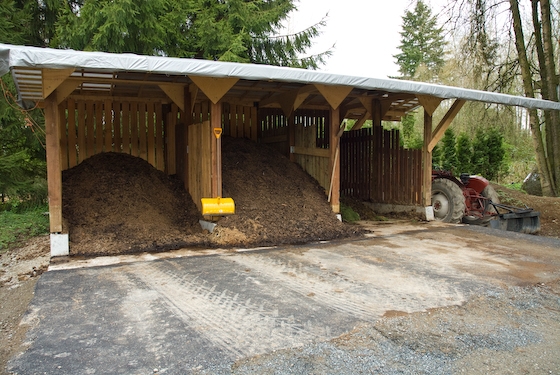
Photo courtesy of Langley Environmental Partners Society
13. Buying, trading, and selling old equipment and gear is a great way to recycle and reuse items. Purchasing used items costs less than buying new, and you’re saving an item from ending up in our already over-stuffed landfills. So check out your local tack shop and equine clubs for upcoming tack sales and swaps. If there aren’t any in your community, why not start one?
Related: How Climate Change is Affecting Our Horse Industry
14. There are lots of other opportunities for reducing, reusing, and recycling around the barn – you just have to think outside the box. Buying larger quantities of items often reduces the amount of packaging and can be more cost effective. Baling twine can be braided and used as rope for door and fence ties, replacing handles on buckets, making trellises for the garden, or even weaving into a barn mat for wet footwear. Old tack, saddles, and blankets can come in handy for replacement parts or special adaptations.
Trail Stewardship

Wide, well-established trails allow you to ride side-by-side which is great for socializing, and distributes the impact on the trail. Photo: Robin Duncan Photography
15. Enjoying a ride on the trails in your local community, or further afield, is a great way to bond with your horse, catch up with friends and riding companions, and get out and enjoy nature. Make sure you are helping to protect the natural environment by following the old mantra of “take only memories, leave only hoof prints.”
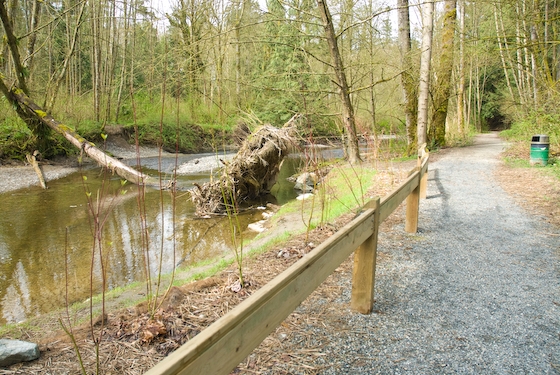
When riding out on the trail, avoid ecologically sensitive or fenced off areas. Photo courtesy of Langley Environmental Partners Society
16. Obtain a map of the trail system and plan ahead based on trail features and weather conditions. Low lying trails that are prone to being wet should be avoided after wet weather to minimize the impact on the trail. Horses can compact wet soil leading to further pooling of water, creation of mud, and other drainage issues.
17. If you notice that a popular trail is showing signs of wear and tear, pick another trail to give it a chance to recover. When travelling in large groups choose wide, well established trails to allow for side-by-side riding which is great for socializing and distributes the impact on the trail. Avoid creating a new trail or widening a narrow trail.
18. Make note of ecologically sensitive areas within the trail system including areas where the trail comes into close contact with watercourses, bird breeding and nesting habitats, fish spawning habitats, and areas of new plant growth. Being aware of these areas will help you and your horse tread lightly.
19. Don’t let your horse nibble emerging sprouts, leaves, trees, or other greenery. While it may seem like a nice treat, this greenery might not be safe for your horse and is an integral part of the trail.
20. Bring water from home for your horse or use watering stations provided rather than letting your horse access a local watercourse. If there aren’t watering stations available, bring a collapsible bucket to collect water from the watercourse to bring to your horse. This ensures that sensitive stream banks and riparian areas are protected from damage caused by heavy horses and their hooves.
21. If you like packing a snack for your horse or if you are going for an extended trip, bring certified weed-seed-free hay. This is especially important because hay can harbor the seeds of many weed plant species, some of them invasive. Spreading these weed plant species, especially into a beautiful trail system, is less than desirable.
Horses are wonderful animals that enrich our lives and give us the opportunity to connect with the natural environment. Whether you board your horse or keep him on your own property, there are things you can do to reduce your ecological hoofprint and achieve that picturesque vista of you and your horses living in harmony with nature.
Related: Get Your Horse on a Track System
Related: How to Green the Horse Barn
Stephanie Captein is Agriculture Programs Coordinator at Langley Environmental Partners Society (LEPS) where she works with equine owners to lighten their impact on the environment. For more information, visit www.leps.bc.ca.
Main Photo: Shutterstock/Kimberly Watley



